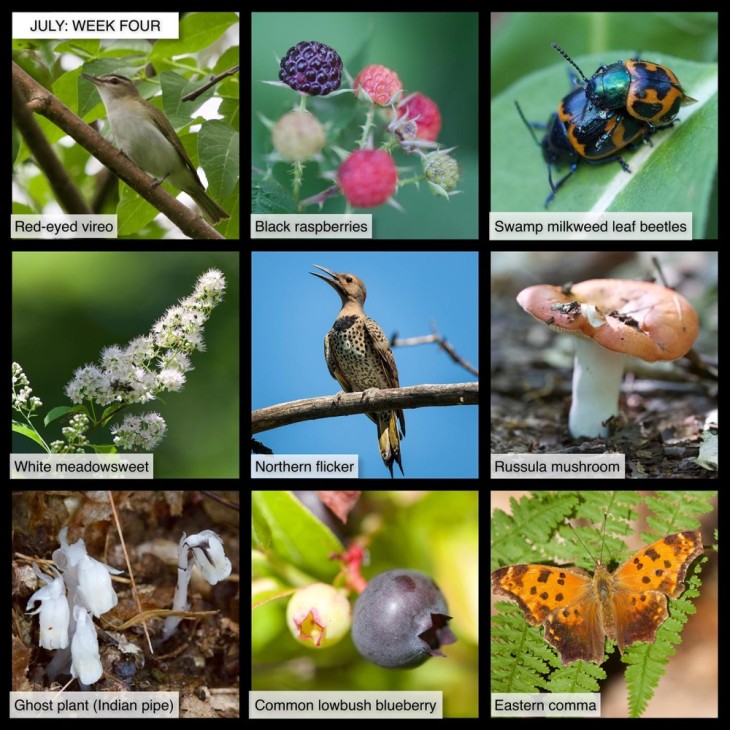This week, deep in the shady woods, we discovered a filmy dome web – a less common (or at least, much harder to find) variation on the bowl and doily sheet webs that one often encounters in fields. Artist and science writer Rachel Sargent Mirus included this web form in her “Spiderweb Sampler” for the Summer 2023 issue Northern Woodlands magazine. As Mirus notes, the spider that commonly makes this structure, Neriene radiata, often chooses a site in shaded, low lying vegetation, and while it waits for prey, lurks in the apex of the dome. Sure enough, the tiny spider was just where Sargent Mirus said it would be – if you look very closely at this photo, you’ll see a dark speck.
We’ve been seeing numerous clusters of both ghost plant (also called one-flowered Indian-pipe, Monotropa uniflora) and yellow pine-sap (Hypopitys monotropa). These plants, which are often mistaken for fungi, lack chlorophyll and don’t rely on photosynthesis. Instead, both are mycotrophs, meaning that they parasitize mycorrhizal fungi, and in this way, indirectly, pull energy from the roots of the trees. Although they’re similar looking, if you inspect their flowers closely, you’ll see that ghost plant has singular flowers, whereas pine-sap produces cascades of flowers. Pine-sap also has fuzz on its stems, and ghost plant does not. (Most of the time ghost plant is also much more pure white than pine-sap … but that isn’t a reliable distinction.)
Fuzzy pink steeplebush flowers are blooming now, and attracting a diversity of butterflies, bees and other pollinators. This tough meadow shrub grows in profusion in the wet areas of meadows, and other places that offer a combination of sun and damp soil. One of its benefits as a pollinator plant is that it keeps blooming for several months.
And, again, if you have any interest in mushrooms, this really is the year to explore them. We’ve never seen so many species at one time, growing in so much abundance. Two that we’ve noticed in several locations this week, are unicorn mushrooms – small, orange mushrooms with knobs on the tops of their caps that often grow out of moss-covered, rotten logs – and painted suillus, a mycorrhizal mushroom that typically grows in the company of eastern white pine trees. Note: the painted suillus mushrooms in the image are still emerging, and haven’t yet flattened out their caps. If you find an older mushroom, peek underneath the cap to see lemon-colored pores.
What have you noticed in the woods this week? Submit a recent photo for possible inclusion in our monthly online Reader Photo Gallery.


